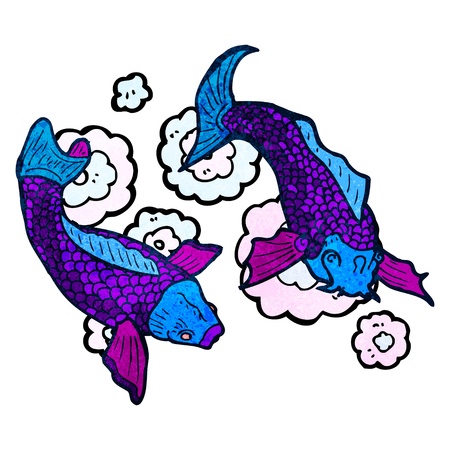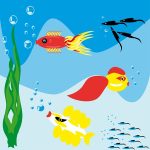1. Introduction: The Link Between Climate Change and U.S. Fisheries
Climate change is no longer a distant concern—its actively reshaping the way we fish in the United States. As ocean temperatures rise, sea levels shift, and weather patterns become more unpredictable, these environmental changes are directly affecting fish populations and their habitats across American waters.
From the Gulf of Mexico to the North Atlantic, warming seas are causing many species to move to cooler waters. This means fish that were once abundant in one region might now be harder to find or have completely shifted their range. In turn, this impacts local fishing communities, recreational anglers, and commercial fisheries alike.
Heres a quick look at how climate change is influencing key aspects of U.S. fisheries:
| Climate Impact | Effect on Fisheries |
|---|---|
| Rising Ocean Temperatures | Fish migrate north or into deeper waters; some species decline in traditional areas |
| Changing Currents & Weather Patterns | Affects spawning cycles and food availability for fish populations |
| Ocean Acidification | Makes it harder for shellfish like oysters and clams to form shells; harms juvenile fish |
| Sea Level Rise & Coastal Erosion | Deteriorates coastal habitats such as marshes and estuaries used for breeding |
| More Frequent Storms | Disrupts fishing seasons; damages gear and infrastructure; unsafe conditions on water |
This shift in natural conditions has prompted government agencies like NOAA (National Oceanic and Atmospheric Administration) and state regulators to rethink fishing regulations—from setting new catch limits to adjusting fishing seasons—to better protect vulnerable species and ensure sustainable practices going forward. Understanding how climate change is tied to these regulatory changes is key for anyone who fishes in U.S. waters, whether youre casting from a kayak or running a commercial vessel.
Warming Waters and Species Migration
As ocean temperatures continue to rise due to climate change, many fish species commonly found in U.S. waters are on the move. Warmer waters are pushing both commercial and recreational fish northward or into deeper, cooler parts of the ocean. This shift is creating big changes for local fishing communities that have relied on certain species for generations.
Why Fish Are Moving
Fish are cold-blooded animals, meaning their body temperature depends on the environment. When the water gets too warm, they seek out areas that better match their preferred temperature range. This migration affects where fish like cod, lobster, black sea bass, and tuna can be found.
Examples of Shifting Fish Populations
| Species | Traditional Range | New Range Due to Warming |
|---|---|---|
| Lobster | Northeast (Maine) | Moving further north into Canadian waters |
| Black Sea Bass | Southeast U.S. coast | Now more common off New Jersey and New York |
| Tuna | Southeastern Atlantic & Gulf of Mexico | Pushing north along the East Coast |
| Cod | Northern New England | Declining as warmer waters become unsuitable |
The Economic Impact on Local Fisheries
This shift isn’t just about where fish swim—it directly impacts coastal economies. Fishermen in southern regions may lose access to key species, while northern ports might see new opportunities. But adapting to these changes takes time and resources, especially for small-scale operations that rely on traditional catch patterns.
How Regulations Are Changing
The federal and state governments are adjusting fishing regulations to keep up with these changes. Quotas and limits that were based on historic fish locations are being reviewed and sometimes reallocated. For example, a state that rarely saw black sea bass before might now receive a larger share of the quota due to the species new abundance there.
Regulatory Adjustments in Action
- The Mid-Atlantic Fishery Management Council has updated quotas for black sea bass based on new population data.
- Lobster trap limits and seasons are under review as lobsters migrate northward.
- Tuna catch rules are being reassessed as distribution shifts along the East Coast.
The Role of Science and Data
A big part of adapting regulations involves collecting accurate data about where fish are now and how many there are. Government agencies like NOAA work closely with researchers, fishermen, and regional councils to monitor stock levels and make science-based decisions that protect both the environment and fishing livelihoods.

3. More Frequent and Severe Weather Events
Climate change is making extreme weather events like hurricanes, droughts, and floods more common and intense across the U.S. These events are not only impacting coastal communities but also disrupting marine habitats and fishing operations in major ways.
How Weather Events Affect Fishing
Hurricanes can destroy fishing infrastructure, damage boats, and disrupt fish migration patterns. Droughts reduce freshwater flow into estuaries, which affects the breeding grounds for many species. On the other hand, heavy rainfall and flooding can cause runoff that pollutes coastal waters, leading to fish kills and habitat degradation.
Emergency Closures and Seasonal Reevaluations
As a result of these unpredictable weather patterns, state and federal agencies are being forced to make quick decisions to protect fish populations and support sustainable fisheries. Emergency closures are becoming more common when a storm or flood suddenly reduces fish numbers or damages spawning areas. In some cases, entire seasons have to be reevaluated to account for these disruptions.
| Weather Event | Impact on Fisheries | Regulatory Response |
|---|---|---|
| Hurricane | Habitat destruction, disrupted migration | Emergency closures, gear loss compensation |
| Drought | Reduced freshwater flow, lower reproduction rates | Seasonal limit adjustments |
| Flooding | Polluted runoff, fish mortality | Temporary area closures, water quality monitoring |
A Growing Challenge for Fishery Managers
Because these events are happening more often, fishery managers are under pressure to adapt quickly. Traditional models used to set quotas and seasons often don’t account for sudden environmental changes. This is leading to a shift toward more flexible management strategies that can better respond to real-time conditions caused by climate change.
4. Policy Shifts and Adaptive Management Strategies
As climate change continues to affect ocean temperatures, sea levels, and the migration patterns of fish species, U.S. regulatory bodies are rethinking how they manage fisheries. Agencies like the National Oceanic and Atmospheric Administration (NOAA) and regional fishery management councils are taking a more flexible approach to setting fishing rules. These changes aim to help protect fish populations while still supporting coastal communities that rely on fishing.
How Regulations Are Changing
Traditionally, fishing regulations such as catch limits, size restrictions, and open seasons were based on long-term historical data. But with climate conditions changing so rapidly, those old models don’t always reflect current realities. Now, regulators are using real-time environmental data to make quicker and more accurate decisions. Heres how some of these updates are being implemented:
| Regulation Type | Traditional Approach | Climate-Informed Update |
|---|---|---|
| Catch Quotas | Set annually based on past stock assessments | Adjusted more frequently using real-time population and temperature data |
| Size Limits | Based on historic growth rates and reproduction cycles | Modified as species mature faster or slower due to warming waters |
| Fishing Seasons | Fixed dates each year | Dynamically adjusted depending on migration shifts and spawning periods |
The Role of NOAA and Regional Councils
NOAA works closely with eight regional fishery management councils across the U.S., including areas like the Gulf of Mexico, New England, and the Pacific Coast. These councils bring together scientists, commercial fishers, recreational anglers, and conservationists to craft policies that fit local needs while also responding to national climate trends.
Examples of Adaptive Strategies:
- Dynamic Closures: Areas may be temporarily closed to fishing when water temperatures rise too high for certain species.
- Ecosystem-Based Management: Instead of managing one species at a time, councils now consider how entire ecosystems are shifting due to climate impacts.
- Flexible Permitting: Some regions are testing permits that allow fishers to target different species depending on seasonal availability.
Why It Matters for Anglers
If youre an angler in the U.S., its important to stay updated on local regulations because they may change more frequently than before. Checking NOAA or your regional council’s website before heading out can help you avoid fines—and protect the future of fishing for generations to come.
5. Fishermen, Industry Response, and Advocacy
As climate change continues to reshape America’s waters, fishermen across the country—both recreational and commercial—are stepping up to adapt. From shifting fish populations to changing ocean temperatures, anglers and industry leaders are recognizing the need for new approaches that help sustain both their livelihoods and marine ecosystems.
Adapting on the Water
Many American anglers are noticing that their favorite fishing spots are not what they used to be. Warmer waters have caused some species to migrate north or into deeper areas, forcing fishers to adjust where and when they cast their lines. For example, striped bass and black sea bass have been showing up in places they rarely appeared before. This shift has made it more challenging for both weekend anglers and full-time commercial boats to keep up.
Commercial fishers have also had to invest in new gear or travel farther distances, which means higher fuel costs and longer trips. These changes aren’t just about economics—they’re about safety, sustainability, and protecting future access to resources.
Industry Groups Taking Action
Fishing associations, seafood companies, and environmental nonprofits are now working together more than ever. Many organizations are pushing for “climate-smart” policies that reflect the reality of today’s oceans. This includes updating quotas based on real-time science, improving data collection, and setting limits that protect vulnerable species during spawning seasons.
The table below highlights a few examples of how different groups are responding:
| Group | Response |
|---|---|
| Recreational Anglers | Using mobile apps to track fish movements and comply with changing regulations |
| Commercial Fishers | Investing in adaptive fishing gear and participating in cooperative research programs |
| Seafood Industry | Sourcing from sustainable fisheries certified by third-party organizations |
| Environmental NGOs | Pushing for climate-resilient management plans and better habitat protections |
The Role of Advocacy
A growing number of voices within the fishing community are calling on policymakers to consider climate data when crafting regulations. Groups like the American Saltwater Guides Association and Pew Charitable Trusts have emphasized the importance of flexible management systems that can respond quickly to environmental changes.
Younger Generations Leading the Way
Younger anglers are especially vocal about protecting fish stocks for the long haul. Through social media campaigns, podcasts, and local events, they’re spreading awareness about how climate change affects fishing—and what can be done about it.
A Shared Responsibility
The message is clear: adapting to climate change isn’t just a government issue—it’s something every angler, captain, processor, and consumer can play a role in. Whether its choosing sustainable seafood at the grocery store or supporting science-based regulations, everyone has a part in keeping America’s fisheries strong for generations to come.
6. The Future of Fishing Regulations in a Changing Climate
As climate change continues to impact ocean temperatures, sea levels, and fish migration patterns, U.S. fishing regulations are expected to evolve significantly in the coming years. Scientists and policymakers are working together to create long-term strategies that not only adapt to these changes but also ensure the sustainability of fish populations for future generations.
Data-Driven Decision Making
One of the biggest shifts we’re seeing is the move toward data-driven regulation. Thanks to advancements in satellite technology, ocean monitoring, and fish tracking systems, fisheries managers now have access to more accurate and timely information than ever before. This allows for more responsive management decisions based on real-time environmental conditions.
How Technology is Shaping Regulation
| Technology | Impact on Regulation |
|---|---|
| Satellite Monitoring | Tracks sea temperature changes and helps predict fish migrations |
| Electronic Catch Reporting | Improves accuracy of fish stock assessments |
| Climate Modeling Tools | Forecasts long-term ecosystem changes for better planning |
Flexible Quotas and Adaptive Management
Because fish are moving to new areas due to warming waters, traditional fishing zones and seasonal limits may no longer be effective. Regulatory agencies like NOAA (National Oceanic and Atmospheric Administration) are considering more flexible quota systems that can adjust based on species distribution and abundance.
This adaptive approach means fishermen might see more frequent updates to rules, but it also helps prevent overfishing and ensures that regulations stay relevant as conditions change.
Protecting Future Generations of Anglers
The goal isn’t just about today’s catch — it’s about making sure our kids and grandkids can enjoy fishing too. That means protecting nursery habitats, reducing bycatch (unintended catch of non-target species), and enforcing sustainable practices across both commercial and recreational sectors.
Key Goals for Long-Term Sustainability:
- Preserve spawning grounds through marine protected areas (MPAs)
- Implement science-based catch limits that reflect current environmental conditions
- Encourage responsible angling through education and outreach programs
The future of fishing will rely heavily on collaboration between scientists, policymakers, fishermen, and local communities. By embracing innovation and staying flexible, we can keep our oceans healthy—and our lines tight—for generations to come.

